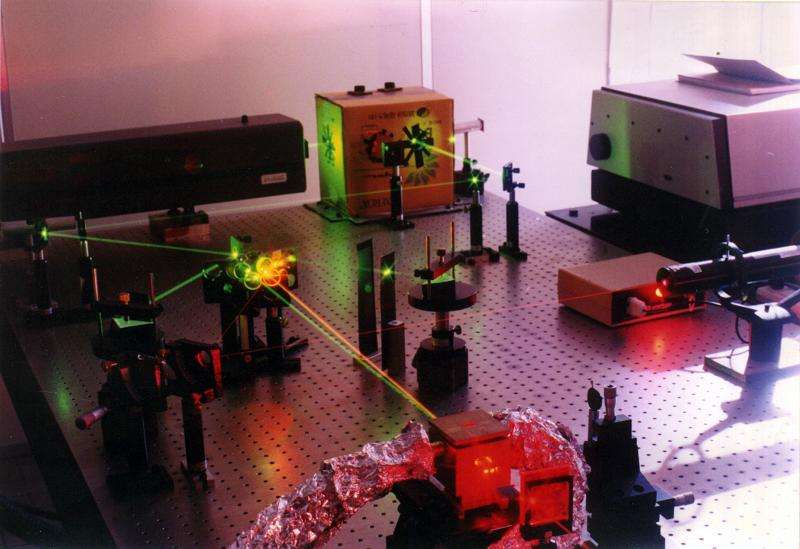Researcher creates technique for nanoscale measurements using light

Researchers from disciplines such as biology, mechanical engineering, or pharmaceuticals use nanoscale elements for their projects (nano corresponds to a billionth of a meter). Handling these compounds requires tools of extreme precision and high-accuracy measurements.
The professional work of Rodolfo Cortés Martínez, member of the Center for Scientific Research and Higher Education (CICESE) in Monterrey, north of Mexico, responds to these needs. He has developed a measurement process based on the interference of evanescent fields in the far field.
"This is a noninvasive technique able to measure objects or compounds of nanometric dimensions without doing any damage. An object to be measured is placed between the light sources and the separation between them is considered. Then we quantify the generated fringes through their periodicity and take account of our observation distance so that we can determine the diameters and thicknesses of objects that are susceptible to damage by using other mechanical instruments.
"Another way to achieve this is to use just one light source instead of two, placing specific objects on it so that they scatter light and capture its overlapping with a specialized camera. The interference fringes give us a measure of the dimensions or separation between the objects immersed in the field of light."
The application of interferometric techniques to sense the relative nanoscale displacement of objects involves moving a tapered optical fiber closer to a sample. To make this kind of approach at these scales, a series of mechanical steps is required, "which uses a micrometer screw closing in at a micron's distance, approximate to 300 nanometers, for which we developed an optical technique based on light interference that gives us a measure of approximation to the surface of the tip of what we want to characterize.
"Our technique uses the reflection of light through the tip of an optical fiber, and the reflection causes interference with itself in space. That light is captured by a specialized camera and shows us the interference pattern of the two sources of light, and then the approach of these bands is the value we can look for. "
This technique has been used in a joint project between the NanoOptics Group at CICESE Monterrey and Héctor Rafael Siller Carrillo from the Technological Institute of Superior Studies in Monterrey (ITESM), which was complemented by so-called fuzzy logic; the combination of both systems has been employed for a device called a near field microscope.
The optics specialist says that the technique has resulted in a publication that describes how two light sources were created on the surface of a prism, so that the light that spreads on the surface is captured far from the surface using a camera, so that superposition of light interference fringes again gives the information required for measurement.
Cortés Martínez has been scientifically trained in the branch of optics at the nanoscale which is based on the study of the processes of interaction with light.
He notes that metrology techniques, which require a nanoscale or non-invasive approach, include specialties such as mechanical engineering, precision measuring the wear of mechanical tools, among many other applications.
The projects that have used the technique have led to the publication of two scientific papers on international journals.
Provided by Investigación y Desarrollo




















